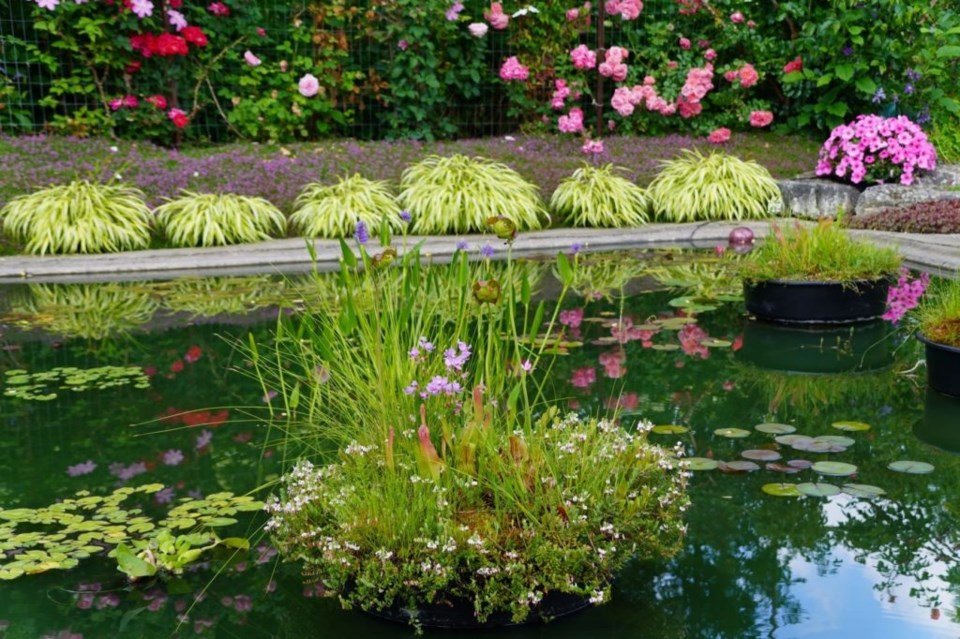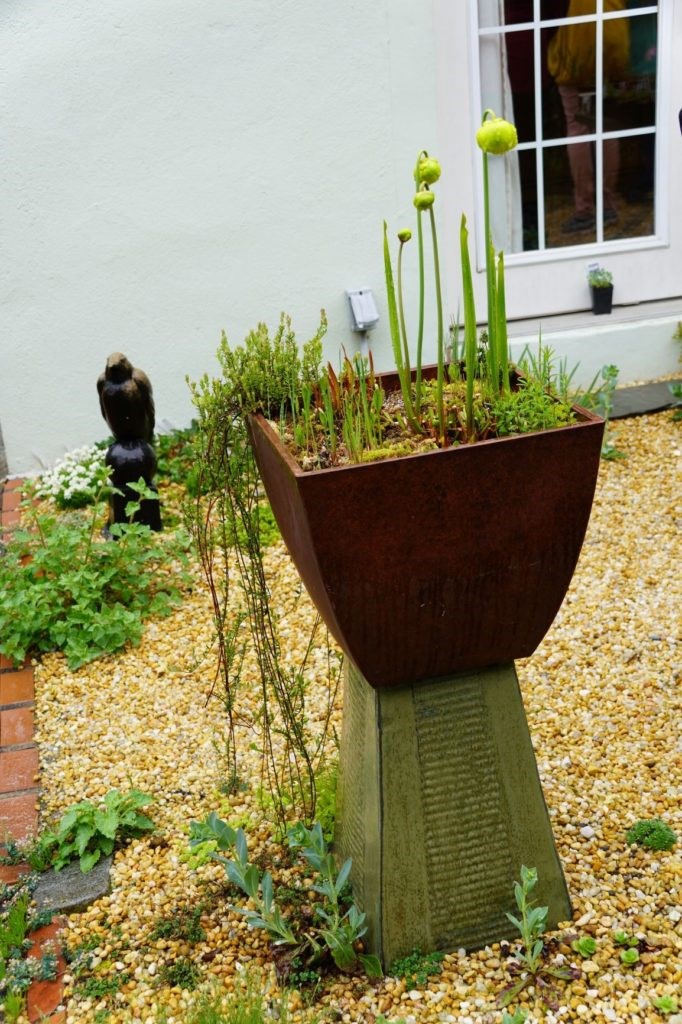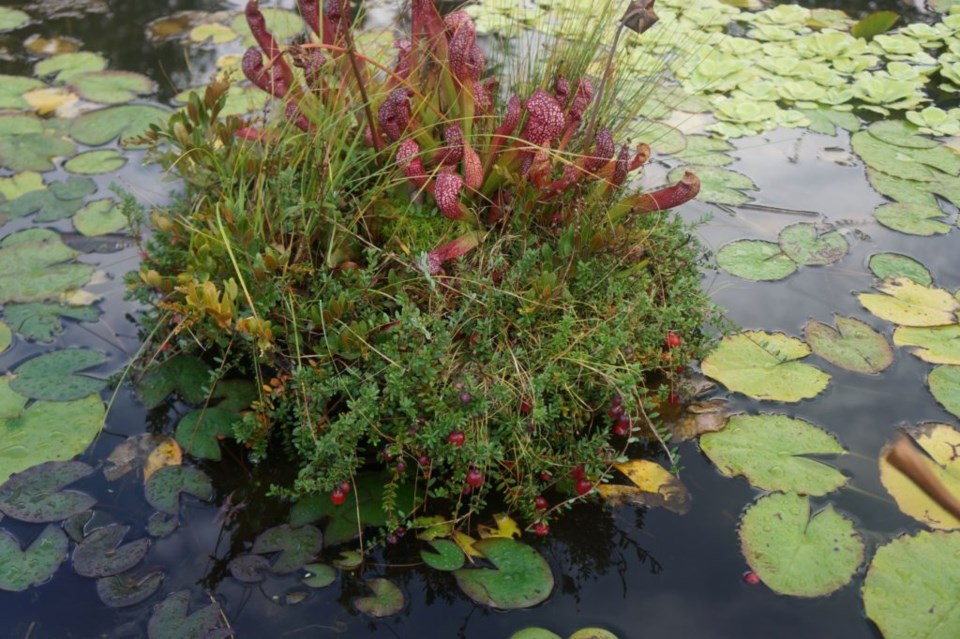
From the time I was a young child, I was fascinated by the wetlands and the variety of creatures and plants inhabiting them.
Now as an avid gardener, I still find a bog one of my favourite areas of the entire garden. A relatively small area can hold a huge number of native plants that provide interest from early spring to late fall. The first to bloom are pitcher plants ( Saracenia purpurea) followed by bog rosemary (Andromeda polifolia) and Labrador tea (Rhododendron groenlandicum).
Early summer brings blooms on cranberries, different sedges and orchids, cotton grass and the fascinating insect-eating sundews. Finally in the fall, cranberries are full of red berries around white lady’s tresses orchids (Spiranthes odorata variety Chadds Ford).
Last fall I had enough cranberries from my plants to make sauce for Thanksgiving and then some. I find the cranberries flower and set fruit best when they are pruned and forced to branch out. For those wishing to have a small container bog, there is a dwarf variety of cranberry called Hamilton.
The bogs are easy to construct and require low maintenance. They can be built on land, in the pond, on the patio and even on the balcony. My pond bogs are nothing more than plastic containers, 24 inches wide and about 10 inches deep, submersed a couple of inches in the water. The containers need a few holes on the bottom and are filled with 50 per cent sand and 50 per cent peat. Long fibre peat is preferred, the kind used by florists but peat moss will work as well. These “floating” bogs are left in the pond unprotected during the winter months frozen in the ice. The frogs love to snuggle in the cool moss during the heat of the day.
My garden pond is an area in full sun excavated to about 18 inches and lined with pond liner. It is also filled with 50/50 sand and peat. To avoid stagnant water at the bottom of the bog I created the following system: a one-gallon empty pot placed up side down at the bottom of the bog serves as water chamber. Punch a hole in the middle of the bottom of the pot and insert plastic tubing in the pot. Make sure the tubing is long enough to reach outside of the finished bog. From time to time run some fresh water through this tube.
It is fascinating how many different mosses appear and flourish in full sun. Here I grow the same type of plants, but have to protect the entire area with a net to prevent the birds and racoons from digging it out.
Bogs can also be in any sized container placed high on a pedestal where the racoons cannot reach them. This way you can admire your little treasures without getting down on your knees. You will have to add some rain water to the container during dry spells.

Bog plants and seeds are commercially available and should never be taken from the wild.
Many plants can be started from seeds sprinkled on peat and sand.
The seeds are available from specialty sources such as the Ontario Rock Garden Society, North American Native Plant Society, Alpine Garden Society, Jelitto Seeds and others. A few garden enthusiasts are now growing and selling native orchids from seeds.
Laura Grant is the retired executive director of the American Rhododendron Society, and founder of The Ontario Water Garden Society. She studied horticulture at the University of Guelph and became a Master Gardener in the 80s. She belongs to a number of national and international horticultural organizations, and collects rare fruits and plants, pushing the limits of hardiness to make them grow in Niagara.
